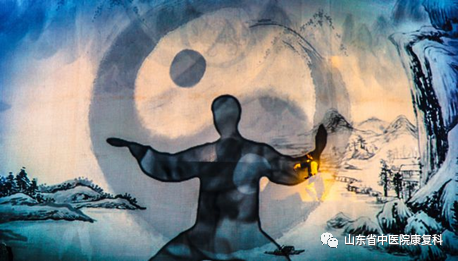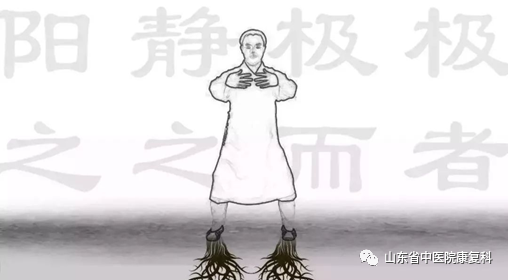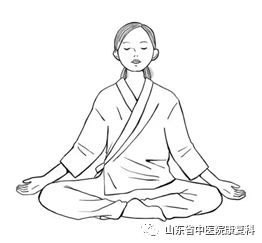The term “Daoyin” first appeared in the text of Zhuangzi, specifically in the chapter titled “Ke Yi”: “Blowing and boasting of breath, expelling the old and inhaling the new, the bear stretches and the bird extends, this is merely for longevity; this is what the practitioners of Daoyin and those who cultivate their form, like Pengzu, cherish.”“Dao” refers to expelling the turbid qi from the body and inhaling the clear qi, which is to expel the old and inhale the new; while “yin” refers to bodily movement. “Daoyin” utilizes the method of breathing to harmonize and regulate the internal qi, combined with active bodily movements such as bending and stretching, to make the body more flexible and resilient. The essence of Daoyin techniques lies in the “Three Adjustments” — adjusting the body, adjusting the breath, and adjusting the mind.

Adjusting the Body
“Adjusting”: to adjust and regulate; “body”: refers to the physical form and posture. Adjusting the body means to modify the physical form through intention, adjusting the entire body including the spine, trunk, and limbs, consciously controlling the posture and movements, allowing the muscles and bones to relax and facilitating the smooth flow of qi and blood. As Zhuangzi said, “When the form is complete, the essence is restored.” When our body is relaxed, the spirit and mind will be in a joyful and fulfilled state. Adjusting the body primarily focuses on movement, stillness, relaxation, and tension, achieving a balance of hardness and softness, being relaxed yet not lax, tense yet not stiff, thus realizing effective and agile movements while emphasizing a peaceful mindset and concentrated spirit.

Adjusting the Breath
“One inhale and one exhale is called breath.” Adjusting the breath refers to modifying the breathing frequency. Based on natural breathing, through the control of intention, gradually achieving smooth, gentle, slow, and elongated breathing. During the process of adjusting the breath, it is required to relax the body and mind, free from pressure and distractions, striving for slow and even breathing, deeply inhaling and slowly exhaling, akin to “the spring silkworm spinning silk”; simultaneously focusing on guiding the breath with intention, combining breath with movement, thus achieving the cultivation of original qi, balancing yin and yang, and harmonizing qi and blood.
Adjusting the Mind
Adjusting the mind, also known as adjusting intention, is the training of intention, usually achieved through meditation, sitting Zen, and contemplation to calm the mind and body. During the process of adjusting the mind, it is necessary to eliminate distractions, concentrate, desire less, and cultivate one’s temperament, achieving tranquility. While calming the spirit, guiding qi with intention regulates the flow of qi and blood. As the ancients said, “When intention arrives, qi arrives; when qi arrives, blood flows; when blood flows, disease does not arise.” Regulating intention promotes the circulation of qi and blood, preventing the onset of diseases. Adjusting the mind is a key link in adjusting the body and breath, as both bodily movements and breathing exercises need to be completed under the guidance of intention.

The Integration of the Three Adjustments
Daoyin techniques are based on the holistic view of life encompassing “form, qi, and spirit,” manifested in practice as the integration of the three adjustments: adjusting the body, adjusting the breath, and adjusting the mind. Intention guides the movements of the body and breath, with internal stillness complementing external movement, combining movement and stillness, with slow and gentle full-body movements paired with fine, elongated, rhythmic breathing, gradually improving the functions of the internal organs, strengthening the foundation and cultivating the essence, eliminating pathogenic factors, enhancing the body’s capabilities, unblocking the meridians, and facilitating the flow of qi, thus promoting blood circulation and unblocking obstructions, preventing diseases and prolonging life.


